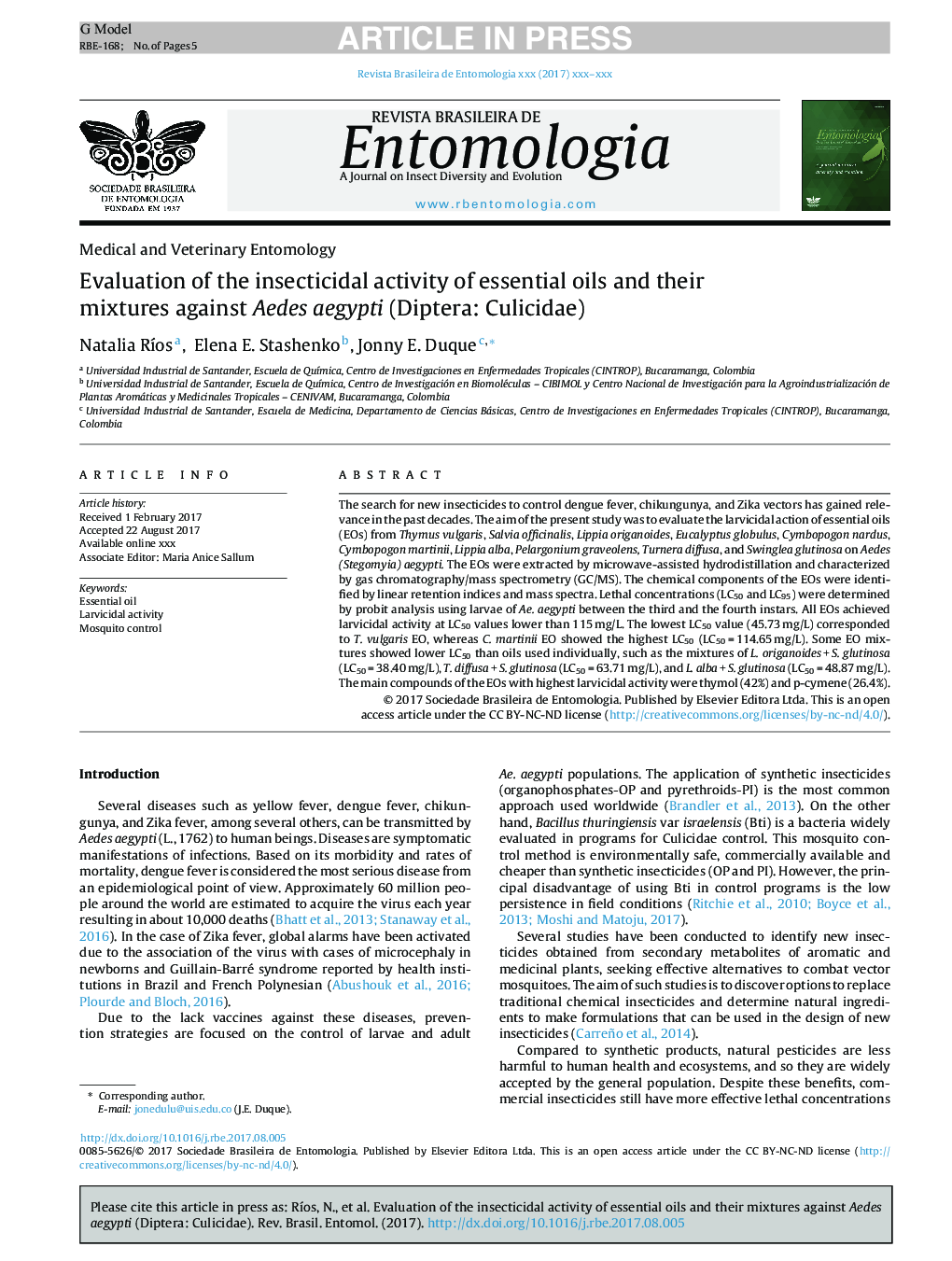| Article ID | Journal | Published Year | Pages | File Type |
|---|---|---|---|---|
| 8877226 | Revista Brasileira de Entomologia | 2017 | 5 Pages |
Abstract
The search for new insecticides to control dengue fever, chikungunya, and Zika vectors has gained relevance in the past decades. The aim of the present study was to evaluate the larvicidal action of essential oils (EOs) from Thymus vulgaris, Salvia officinalis, Lippia origanoides, Eucalyptus globulus, Cymbopogon nardus, Cymbopogon martinii, Lippia alba, Pelargonium graveolens, Turnera diffusa, and Swinglea glutinosa on Aedes (Stegomyia) aegypti. The EOs were extracted by microwave-assisted hydrodistillation and characterized by gas chromatography/mass spectrometry (GC/MS). The chemical components of the EOs were identified by linear retention indices and mass spectra. Lethal concentrations (LC50 and LC95) were determined by probit analysis using larvae of Ae. aegypti between the third and the fourth instars. All EOs achieved larvicidal activity at LC50 values lower than 115 mg/L. The lowest LC50 value (45.73 mg/L) corresponded to T. vulgaris EO, whereas C. martinii EO showed the highest LC50 (LC50 = 114.65 mg/L). Some EO mixtures showed lower LC50 than oils used individually, such as the mixtures of L. origanoides + S. glutinosa (LC50 = 38.40 mg/L), T. diffusa + S. glutinosa (LC50 = 63.71 mg/L), and L. alba + S. glutinosa (LC50 = 48.87 mg/L). The main compounds of the EOs with highest larvicidal activity were thymol (42%) and p-cymene (26.4%).
Related Topics
Life Sciences
Agricultural and Biological Sciences
Agricultural and Biological Sciences (General)
Authors
Natalia RÃos, Elena E. Stashenko, Jonny E. Duque,
